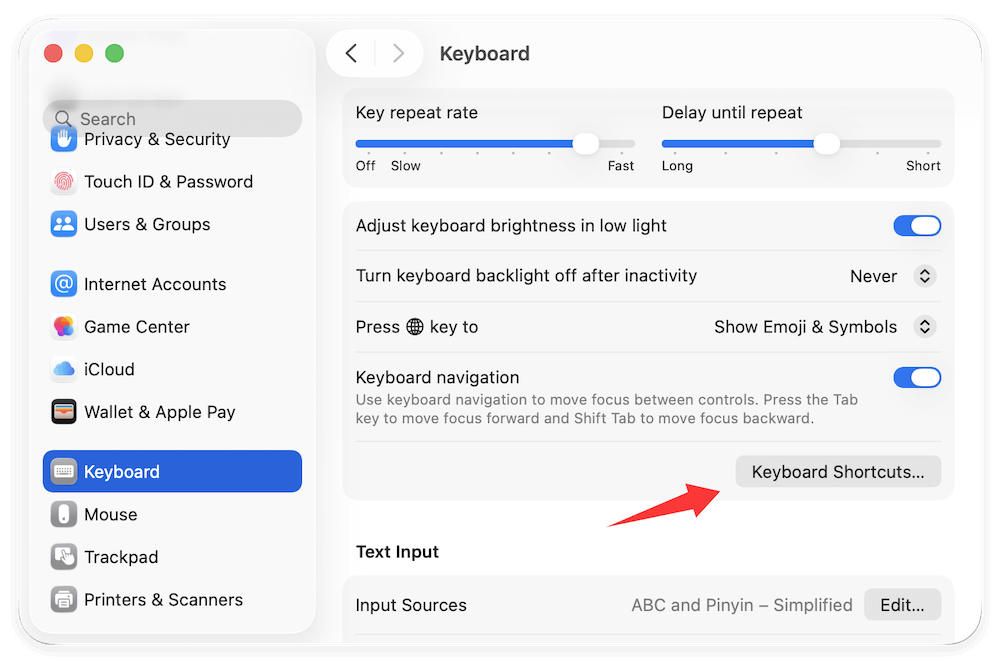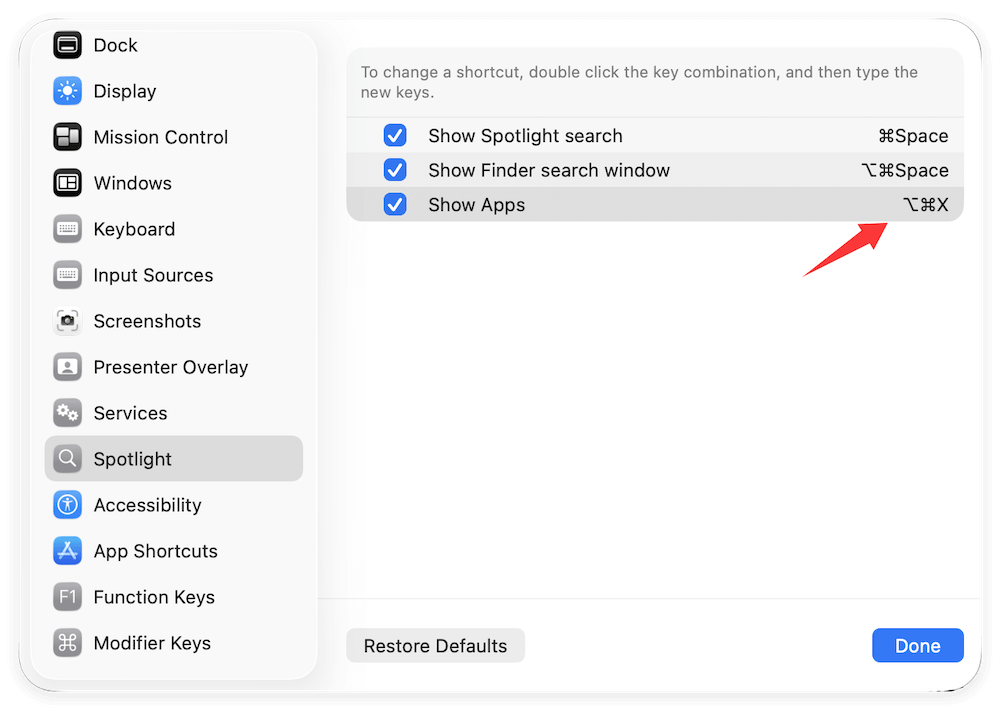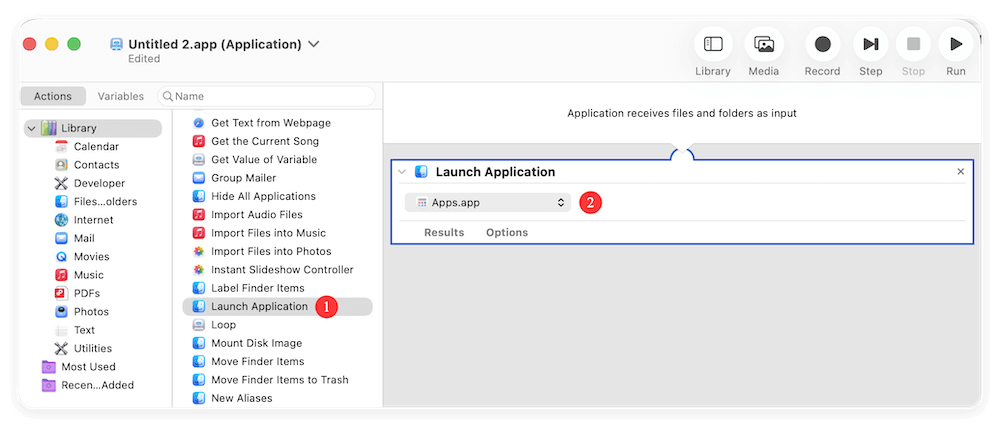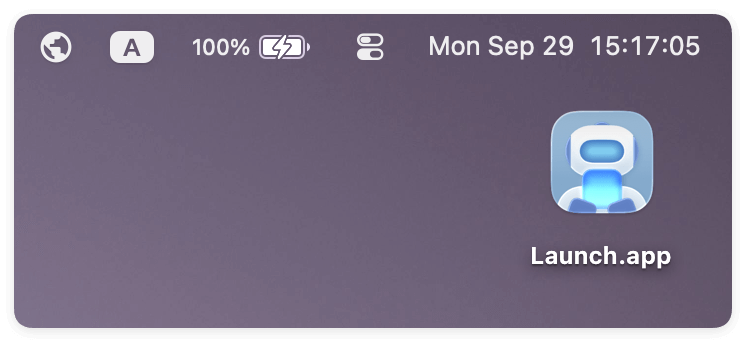Before we start: Launchpad is not available for macOS Tahoe. If you want to access the applications quickly, you can use Apps instead. Also, the third-party software Donemax DMmenu for Mac offers a friendly way to access applications on macOS Tahoe.
PAGE CONTENT:
macOS has always offered users multiple ways to organize, access, and manage applications efficiently. One of the most popular tools for this is Launchpad, a centralized hub where all your apps are visually displayed, making it easy to open, organize, and manage applications. In the latest macOS Tahoe, Launchpad is replaced by Apps.
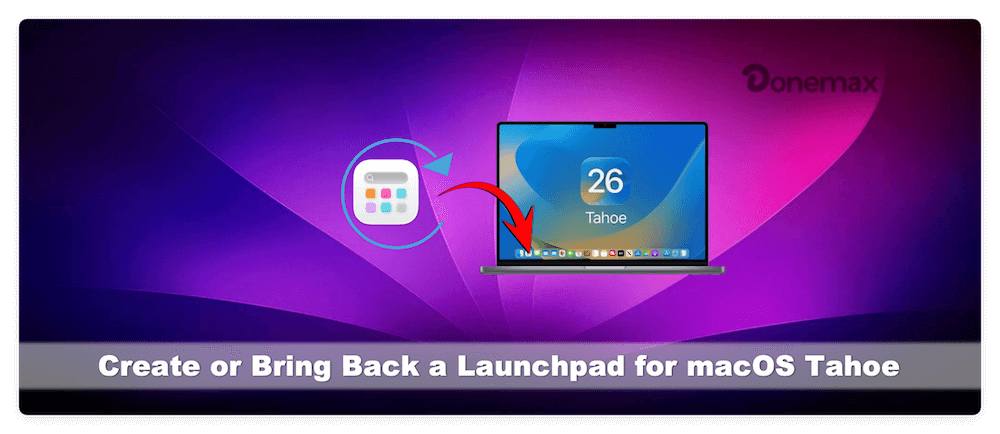
However, some users on macOS Tahoe may find Launchpad (Apps) missing, accidentally removed, or not functioning as expected. Whether due to system glitches, updates, or personal changes in settings, the absence of Launchpad can disrupt daily workflows. This guide will walk you through how to create or bring back Launchpad on macOS Tahoe, along with tips for organizing and troubleshooting it.
What is Launchpad (Apps) on macOS?
Launchpad (Apps) is a macOS feature that provides an iOS-like interface for managing and opening applications. Unlike the Dock, which can only hold a limited number of apps, Launchpad gives a full-screen view where apps are displayed as icons, organized into pages and folders. Some of its key benefits include:
- Quick access to all applications: No need to search through Finder or Dock.
- Organized app management: Create folders, group apps, and maintain an organized workspace.
- User-friendly interface: Easy to navigate even for new Mac users.
Understanding Launchpad's purpose is crucial before attempting to restore or create it. It acts as a bridge between the Dock, Spotlight, and Finder for app accessibility.
Why Launchpad (Apps) Might Be Missing on macOS Tahoe?
There are several reasons Launchpad may be missing or unresponsive on macOS:
- Accidental removal from Dock: Users may drag it off the Dock by mistake.
- Corrupted preference files: System settings controlling Launchpad (Apps) could be corrupted.
- macOS updates or resets: A system update may alter default settings or reset Launchpad (Apps).
- Disabled system settings: Certain customizations may inadvertently hide Launchpad (Apps) from view.
Identifying the root cause is essential for determining the appropriate method to restore or create Launchpad (Apps).
How to Create or Bring Back Launchpad (Apps) on macOS Tahoe?
There are multiple methods to restore Launchpad (Apps) depending on how it was removed or why it is missing.
Method 1. Check for Launchpad in the Dock
The first step is to locate Launchpad in the Dock. By default, the Launchpad (Apps) icon resembles a silver rocket.
- Open your Dock and look for the Launchpad icon.
- If it's missing, open Finder → Applications.
- Locate App.app and drag it back to the Dock for easy access.
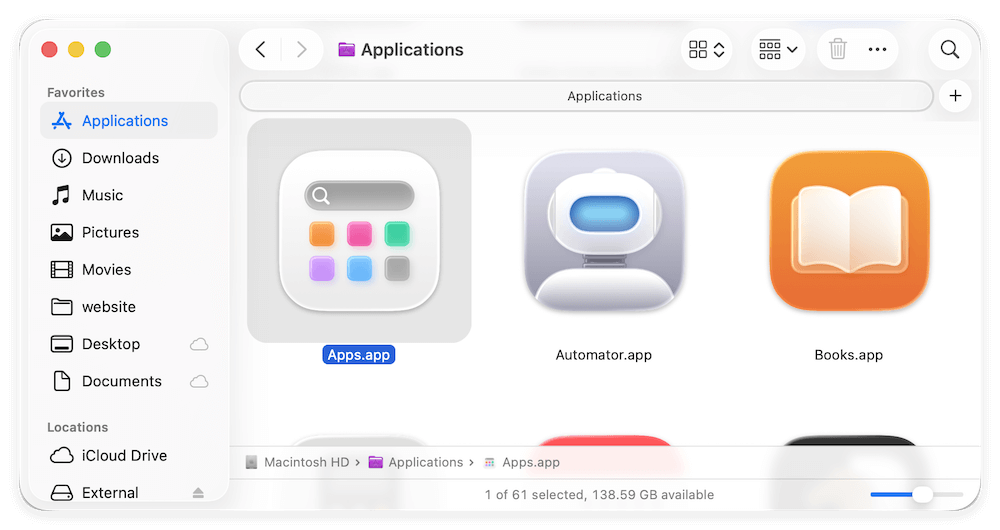
This simple step often restores Launchpad without requiring further troubleshooting.
Method 2. Restore Launchpad (Apps) on macOS Tahoe by Resetting Dock Database
Sometimes Launchpad (Apps) does not appear because its database is corrupted. Resetting Dock can restore it to its default state. Follow these steps:
- Open Terminal from Utilities via Applications.
- Enter the following command:
defaults delete com.apple.dock; killall Dock
- Press Enter.
- The Dock will restart, and Launchpad (Apps) will be restored on Dock.

💡 Note: Resetting Dock may rearrange your apps back to their default order. You will need to reorganize any custom folder structure on Dock after the reset.
Method 3. Create Keyboard Shortcut for Launchpad (Apps)
- Open System Settings → Keyboard → Keyboard Shortcuts.
![create or bring back Launchpad on macOS Tahoe]()
- Add a custom shortcut that opens Launchpad (Apps).
![create or bring back Launchpad on macOS Tahoe]()
- This allows opening Launchpad (Apps) without using the Dock.
Method 4. Using Automator or AppleScript
- Open Automator → New Application.
![create or bring back Launchpad on macOS Tahoe]()
- Add a "Launch Application" action and select Launchpad (Apps).
![create or bring back Launchpad on macOS Tahoe]()
- Save and add the script to Dock or assign a keyboard shortcut.
![create or bring back Launchpad on macOS Tahoe]()
Custom shortcuts are ideal for power users who want faster navigation and enhanced productivity.
Method 5. Use Third-party Tool
You can also use the third-party tool to orange your apps instead of the Launchpad (Apps) on macOS Tahoe. With the professional tool, you can enjoy more features. For example, you can try the software Donemax DMmenu for Mac.
Donemax DMmenu for Mac
- Open the App You Want Quickly
- All-in-one Switches and Optimizer for Mac
- Manage Your Mac with 8+ Powerful Tools
The software offers a option to access and open applications on macOS quickly. Download and run the software DMmenu for Mac. Change to the feature All Applications. Here you can search and open applications quickly.
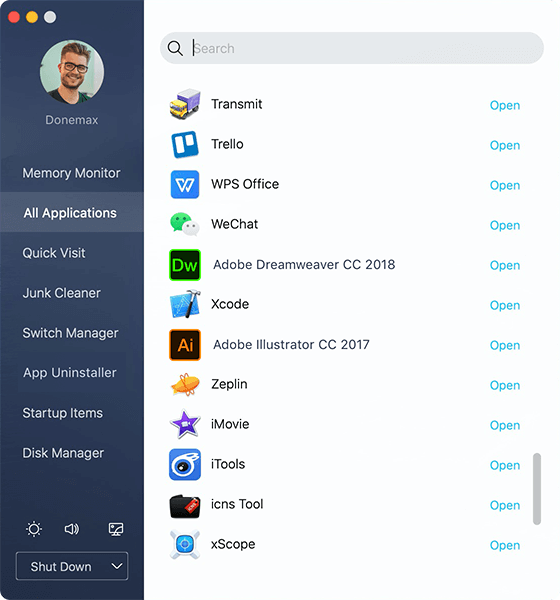
The software is not only a Launchpad (Apps) alternative tool, but also offers many other useful tools. Such as, Junk Cleaner, Switch Manager, App Uninstaller, Disk Manager, etc.
Tips for a Smooth Launchpad (Apps) Experience on macOS Tahoe
- Keep the Applications folder organized; Launchpad mirrors it.
- Group similar apps into folders for easy navigation.
- Regularly update macOS Tahoe to fix potential bugs affecting Launchpad.
- Avoid installing unnecessary apps to prevent clutter.
- Use keyboard shortcuts to enhance accessibility.
Troubleshooting Common Launchpad (Apps) Issues
Even after restoring Launchpad, issues may arise. Here are common problems and fixes:
1. Launchpad (Apps) Not Opening
If Launchpad refuses to open, it could be due to temporary system glitches or corrupted Dock preferences. Try these steps:
- Restart Your Mac: Sometimes, a simple restart resolves minor system glitches. Click the Apple menu → Restart.
- Force Quit Dock: Since Launchpad is tied to the Dock, restarting it can help. Press Option + Command + Esc, select Dock, and click Force Quit. It will automatically restart.
- Reset Launchpad Database: Open Terminal and run:
defaults write com.apple.dock ResetLaunchPad -bool true; killall Dock
- This will reset Launchpad to default settings and often resolves opening issues.
- Check for Conflicting Shortcuts: Open System Settings → Keyboard → Keyboard Shortcuts and verify that no other shortcut conflicts with the Launchpad key combination.
2. Applications Not Showing in Launchpad (Apps)
Sometimes, certain apps may not appear in Launchpad even though they are installed:
- Ensure Applications Are in the Applications (Apps) Folder: Launchpad only displays apps located in the /Applications directory. If an app is in a different folder, move it to Applications.
- Rebuild Launchpad Database: Corrupted databases can hide apps. Use Terminal to reset the Dock database (as described above).
- Manually Add Apps: Drag apps directly from Finder into Launchpad. For apps installed via third-party methods, they may need manual placement.
- Check App Installation: If an app still doesn't appear, confirm it is correctly installed and updated. Some apps may need reinstallation.
3. Launchpad (Apps) Freezes or Becomes Unresponsive
A frozen Launchpad can be frustrating, especially during workflow-intensive sessions. Here's how to fix it:
- Force Quit Launchpad: Press Option + Command + Esc, select Launchpad, and click Force Quit.
- Restart Dock: Since Launchpad relies on the Dock, run this Terminal command to restart it:
killall Dock
- Check System Resources: High CPU or memory usage can freeze Launchpad. Open Activity Monitor and close resource-heavy apps temporarily.
- Safe Mode Boot: Restart your Mac in Safe Mode to see if a startup item is causing the issue. If Launchpad works in Safe Mode, uninstall recently added apps or extensions.
4. Launchpad (Apps) Displays Incorrect Icons
Occasionally, Launchpad may show blank icons or outdated app images:
- Rebuild Icon Cache: Open Terminal and run:
sudo find /private/var/folders/ -name com.apple.dock.iconcache -exec rm {} \; killall Dock
- Update macOS: Some icon display issues are due to bugs fixed in newer macOS updates.
5. Launchpad (Apps) Folders Not Working
If folder creation or app grouping fails:
- Check Permissions: Ensure you have full read/write access to the Applications folder.
- Reset Launchpad Database: As above, resetting can fix folder glitches.
- Recreate Folders: Drag apps out and recreate folders to restore proper functionality.
6. Preventing Future Issues
To avoid recurring Launchpad problems:
- Regularly update macOS Tahoe to the latest version.
- Avoid moving applications outside the Applications folder.
- Backup your Launchpad (Apps) layout using a tool like DockUtil if you have a large custom setup.
- Limit the number of simultaneous applications open during Launchpad (Apps) use to prevent freezes.
Conclusion
Launchpad is an essential macOS feature that simplifies app management and boosts productivity. On macOS Tahoe, Launchpad (Apps) may sometimes disappear or malfunction due to updates, preference corruption, or accidental removal. Whether you need to bring back Launchpad, create a new shortcut, or organize your apps, following the steps outlined above will help you regain full functionality.
By checking the Dock, using Spotlight, resetting the Dock database, and creating custom shortcuts, you can restore Launchpad on macOS Tahoe to suit your workflow. Additionally, proper organization ensures that Launchpad remains a reliable hub for all your applications, keeping your macOS experience smooth and efficient.
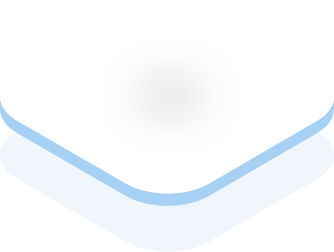
Donemax DMmenu for Mac
A powerful menubar application helps you hide desktop icons and Dock, enable dark mode, connect Bluetooth, monitor system memory, speed up your Mac, manage apps and clean up junks by one click.
Related Articles
- May 12, 2025Purple/Blue/Pink/Black/Green Lines on Mac Screen: Why & Fixes
- May 20, 2025What is ZIP File, How to Open It on Mac?
- Jul 27, 2025How to Connect an SD Card to Mac?
- Jan 16, 202510 Solutions to Fix Fusion Drive Not Mounting or Not Showing Up on Mac
- Nov 04, 2024How to Create Bootable USB Installer for macOS Sequoia?
- Jul 27, 202510 Fixes for Command+S Not Working on Mac

Steven
Steven has been a senior writer & editor of Donemax software since 2020. He's a super nerd and can't imagine the life without a computer. Over 6 years of experience of writing technical solutions and software tesing, he is passionate about providing solutions and tips for Windows and Mac users.

Gerhard Chou
In order to effectively solve the problems for our customers, every article and troubleshooting solution published on our website has been strictly tested and practiced. Our editors love researching and using computers and testing software, and are willing to help computer users with their problems
